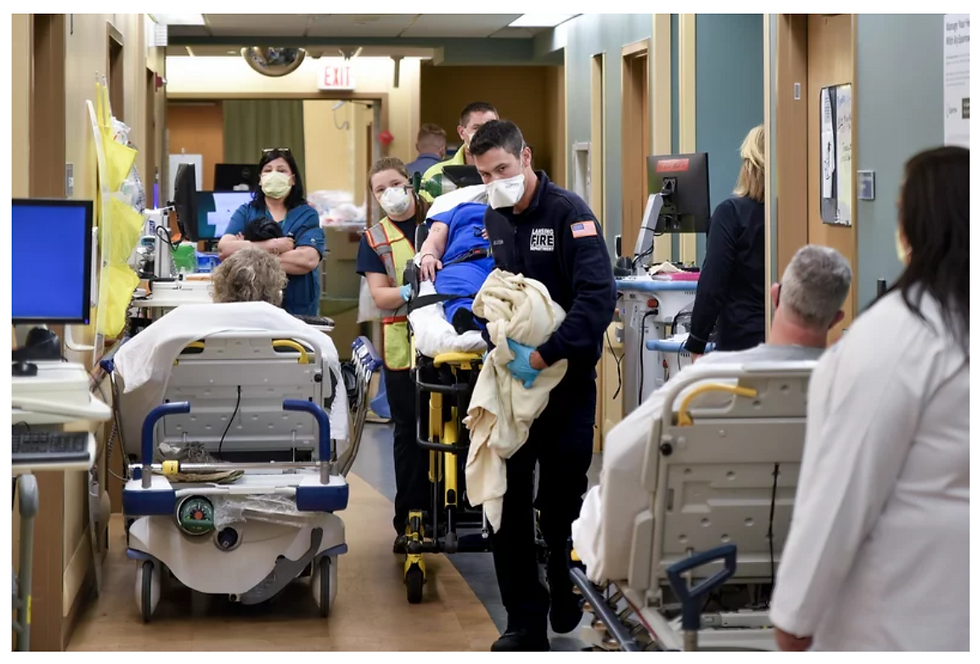How to Manage Risks and Prevent Pressure Ulcers
- katherinepiette
- Sep 20, 2016
- 4 min read
Updated: Mar 30, 2021

In 1859, Florence Nightingale wrote, “If he [the patient] has a bedsore, it’s generally not the fault of the disease, but of the nursing.’’ These are some pretty strong words, considering they came from the Mother of Modern Nursing. Strong enough that the responsibility to prevent pressure ulcers remains a commonly held belief among health care providers across the care continuum.
In the U.S. alone, pressure ulcers affect approximately 2.5 to 3 million adults annually, with related complications leading to 60,000 deaths a year at an estimated cost of $11 billion. One study found that 60% of elderly patients with a diagnosis of pressure ulcers die within one year of discharge from the hospital. At this rate, an estimated 160 people a day in the U.S. will die from complications caused by infections due to bedsores, making them one of the most prevalent dangers facing a patient today.
Originally referenced as a “bedsore”, this skin and soft tissue injury has been called a variety of other names through the years: decubitus, pressure sore, pressure ulcer (PU), and most recently, pressure injury. Regardless of the name, pressure ulcers are a major health issue, particularly when you consider that MANY can be prevented.
When Centers for Medicare and Medicaid Services (CMS) announced that they would no longer reimburse hospitals for treatment of newly acquired Stage 3 and 4 PU in Medicare patients, acute care facilities began aggressive campaigns focused on pressure ulcer prevention (PUP).
Facilities routinely conduct two skin and pressure/shear related assessments on every patient upon admission to the hospital: (1) a head to toe skin assessment for evidence of pressure ulceration already present on admission (POA) and (2) an assessment of the patient's risk for developing a PU.
Risk factors for developing a PU are well known, including: limited mobility, altered or impaired sensation, increased skin moisture, poor nutritional status, bowel/bladder incontinence, advancing age, and mental confusion. The elderly and spinal cord injured patients are most prone to pressure ulcers. Another area of risk is related to the many tools and devices used within a healthcare setting that are meant to support patient healing. Examples of these are oxygen tubing, neck collars and braces, casts and splints and indwelling tubes, such as urinary catheters and PEG feeding tubes. These are called “device-related PU”.
There are many PU risk assessment tools available - these become a foundational component of prevention programs. These tools are useful for determining which patients are at risk for PU and should receive preventive measures. Formal risk assessment tools may not be any better than the nurse's judgment of which patients are at risk for developing a PU. However, these tools, and specifically the Braden Risk Assessment tool, provide an objective assessment of predicted risk that is validated by extensive research with many thousands of patients.
For example, it is now widely understood that the total Braden score does not necessarily provide the critical information needed to address a particular patient’s risk as much as looking at the specific subscale risk areas such as sensory perception, mobility and activity, nutrition, moisture and friction and shearing. For patients who have an assessed subscale value of 1 or 2, prevention measures are heightened to address those specific concerns, as well as addressing the overall risk level.
[Infographic] Crucial information on improving care outcomes
Correspondent to a patient’s PU risk are a variety of pressure and shear reducing measures that address specific areas of risk. These include upgrading the patient’s bed’s support surface to a pressure/shear reduction or low air loss option, applying a foam dressing to the intact skin of the sacral area to minimize sacral shearing and increased moisture, frequent and routine patient re-positioning to limit the time of tissue pressure exposure, nutritional therapies focusing on restoration of a positive nitrogen balance for tissue health, padding and stabilizing any and all drains or tubes used for the patient’s care, and management of moisture whether from bowel or bladder incontinence, perspiration or wound drainage.
So what now?
As a result of instituting aggressive pressure ulcer prevention measures, we have seen that in spite of some nurses' best efforts, some pressure ulcers are unavoidable. Since focusing on pressure ulcer prevention, we have begun to identify phenomena such as skin failure among palliative patients and more formal recognition of Kennedy Terminal ulcers, which typically present shortly before a patient’s demise.
Some organizations have begun discussions on trying to prevent pressure ulcers. Documentation of all components of PUP for the patient are absolutely essential to be able to successfully defend against the unavoidable PU.
SOURCES: Nightingale, Florence, “Notes on nursing: what it is, and what it is not”. New York, D Appleton and Company, 1860. Agency for Healthcare Research and Quality. Accessed September 14, 2016:http://www.ahrq.gov/professionals/systems/hospital/pressureulcertoolkit/putool1.html Lyder, Courtney and Ayello, Elizabeth (2008). Pressure Ulcers: A Patient Safety Issue. Patient Safety and Quality: An Evidence-Based Handbook for Nurses, Chapter 12. Accessed September 14,2016: http://www.ncbi.nlm.nih.gov/books/NBK2650/ National Pressure Ulcer Advisory Panel. Accessed September 14, 2016: npuap.org





Comments